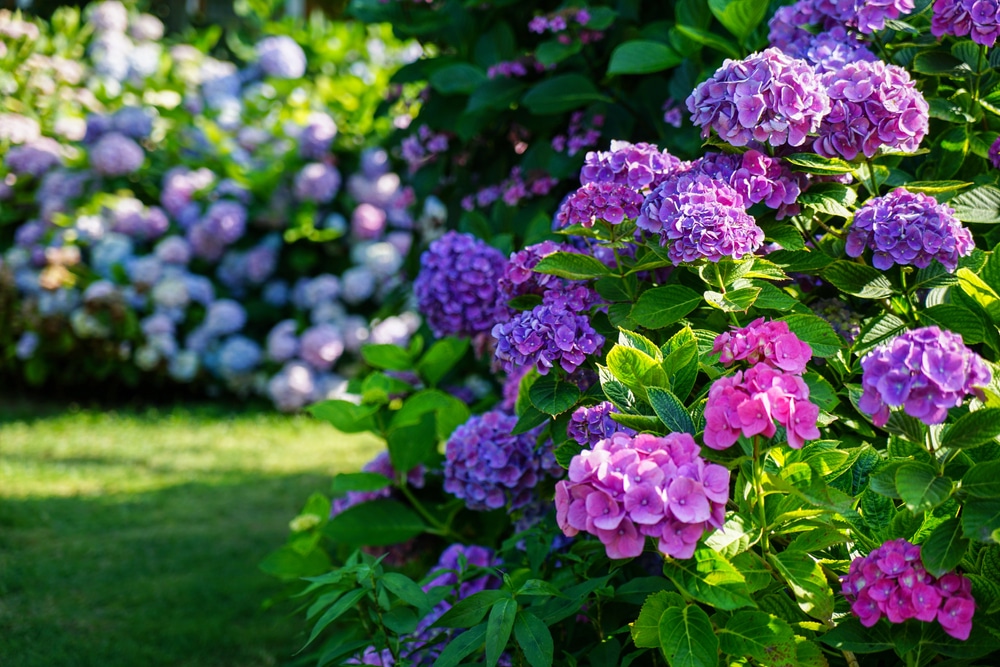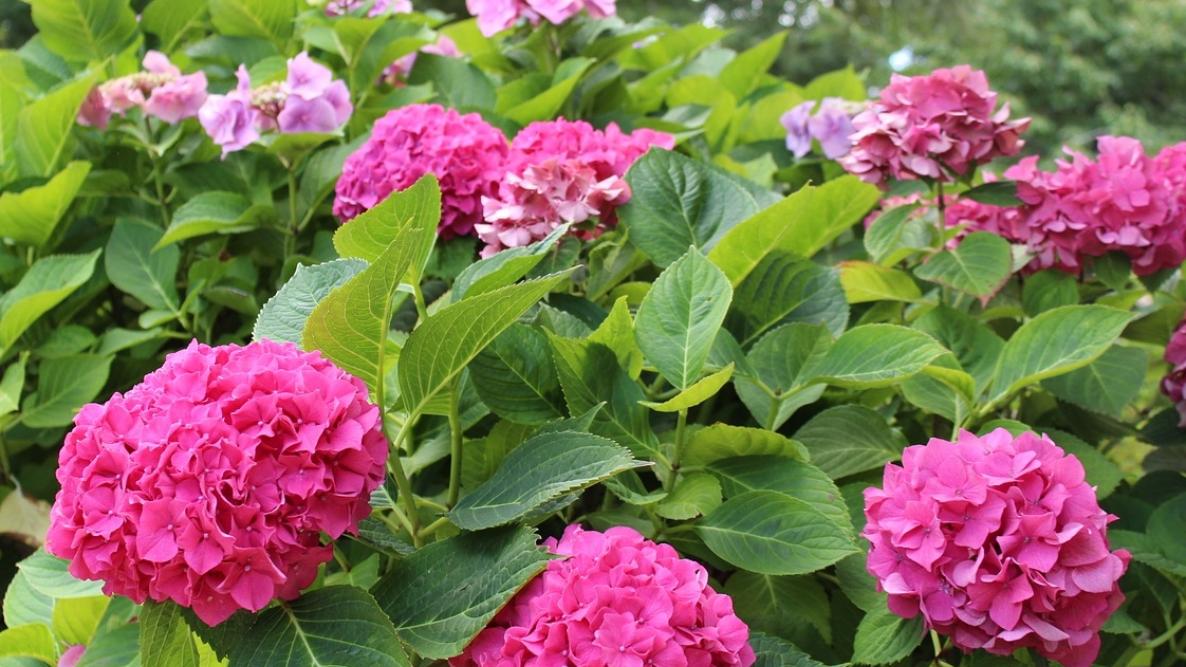How To Fertilize Hydrangeas For Bigger Bountiful Blooms
Hydrangeas are beautiful flowering shrubs that can add a touch of elegance to any garden. But in order to produce their best blooms, they need to be fertilized properly.
Fertilizer provides hydrangeas with the nutrients they need to grow strong and healthy, and it can also help to increase the size and number of their blooms. The type of fertilizer you use, as well as the timing and frequency of your applications, will all affect the health and appearance of your hydrangeas.
In this blog post, we will discuss everything you need to know about fertilizing hydrangeas, including:
- The different types of fertilizer available for hydrangeas
- When and how to fertilize hydrangeas
- How to avoid over-fertilizing hydrangeas
Choosing the Right Fertilizer
There are a variety of different fertilizers available for hydrangeas, including:
- Nitrogen-rich fertilizers: These fertilizers will help to promote lush foliage growth. However, too much nitrogen can lead to weak stems and fewer blooms.
- Phosphorus-rich fertilizers: These fertilizers will help to promote flowering.
- Potassium-rich fertilizers: These fertilizers will help to improve overall plant health and hardiness.
A balanced fertilizer, such as a 10-10-10, will provide hydrangeas with all of the nutrients they need to grow strong and healthy. However, if you are specifically trying to increase the size and number of your hydrangeas' blooms, you may want to use a fertilizer with a higher phosphorus content, such as a 10-20-10.
You can also find organic fertilizers specifically designed for hydrangeas. These fertilizers are made from natural ingredients, such as compost, manure, and fish emulsion, and they are a good option for gardeners who prefer to use organic products.
When to Fertilize Hydrangeas
The best time to fertilize hydrangeas is in the spring, just as the new growth is starting to emerge. This will give the plants the nutrients they need to get off to a good start. You can also fertilize hydrangeas in the fall, but it is important to do so at least six weeks before the first frost.
If you live in a warm climate, you may want to fertilize hydrangeas once or twice more during the summer. However, it is important to avoid fertilizing hydrangeas too late in the season, as this can encourage new growth that will not have time to harden off before the winter.
How to Fertilize Hydrangeas
There are a few different ways to fertilize hydrangeas. You can:
- Dig a trench around the base of the plant and sprinkle the fertilizer in the trench.
- Water the fertilizer into the soil around the plant.
- Apply the fertilizer as a foliar spray.
If you are using a liquid fertilizer, you will need to dilute it according to the instructions on the label. You can then water the fertilizer into the soil around the plant.
If you are using a granular fertilizer, you can sprinkle it around the base of the plant and then water it in. Be sure to apply the fertilizer evenly so that all of the roots can access it.
Avoiding Over-Fertilizing Hydrangeas
It is important to avoid over-fertilizing hydrangeas, as this can damage the plants. Too much fertilizer can cause the leaves to turn yellow or brown, and it can also lead to root rot.
If you are unsure how much fertilizer to use, it is always better to err on the side of caution and use less rather than more. You can always fertilize your hydrangeas again later if they need it.
Conclusion
By following these tips, you can fertilize your hydrangeas properly and help them to produce bigger, bountiful blooms. Just remember to use the right type of fertilizer, fertilize at the right time, and avoid over-fertilizing.
Hydrangeas are beautiful flowering shrubs that can add a touch of elegance to any garden. But to keep them looking their best, they need to be fertilized regularly. The best time to fertilize hydrangeas is in the spring, when they are starting to leaf out. You can use a balanced fertilizer, such as a 10-10-10 or 12-4-8. Apply the fertilizer according to the directions on the label.
If you want to encourage your hydrangeas to produce blue blooms, you can use a fertilizer that is high in phosphorus. You can also add some sulfur to the soil around your hydrangeas. Sulfur will help to acidify the soil, which is what hydrangeas need to produce blue blooms.
To learn more about fertilizing hydrangeas, I recommend visiting . This website has a wealth of information on hydrangea care, including tips on how to fertilize your hydrangeas for the best results.
FAQ of fertilizing hydrangeas
1. How often should I fertilize my hydrangeas?
Hydrangeas typically need to be fertilized 3 times per year: in early spring, early summer, and late summer. However, the exact frequency of fertilizing may vary depending on the type of hydrangea, the climate you live in, and the condition of your soil. If you're not sure how often to fertilize your hydrangeas, it's always best to err on the side of caution and fertilize less often rather than more often.
2. What type of fertilizer should I use for hydrangeas?
A balanced fertilizer, such as 10-10-10, is a good choice for most hydrangeas. If you want to encourage more blooms, you can use a fertilizer with a higher phosphorus content, such as 12-4-8. Avoid using fertilizers that are high in nitrogen, as this can promote excessive leaf growth at the expense of flowers.
3. How much fertilizer should I use?
The amount of fertilizer you need to use will depend on the size of your hydrangea plant. A good rule of thumb is to apply 1 pound of fertilizer per 100 square feet of planting area. Be sure to spread the fertilizer evenly around the drip line of the plant, and water it in well after application.
4. When is the best time to fertilize hydrangeas?
The best time to fertilize hydrangeas is in early spring, when the plants are just starting to leaf out. This will give them a boost of nutrients as they begin their growing season. You can also fertilize hydrangeas in early summer and late summer, but avoid fertilizing them too late in the season, as this can encourage new growth that may not have time to harden off before the first frost.
5. What are the signs of over-fertilizing hydrangeas?
The most common sign of over-fertilizing hydrangeas is leaf burn. This can appear as brown or scorched spots on the leaves. Other signs of over-fertilization include stunted growth, wilting leaves, and yellowing foliage. If you suspect that you may have over-fertilized your hydrangeas, the best course of action is to flush the soil with water. This will help to remove excess fertilizer from the root zone.
Image of fertilizing hydrangeas
5 different images of "fertilizing hydrangeas" from Pinterest:
- Image 1: A woman is using a garden hose to water a hydrangea bush. She is also holding a bag of fertilizer, which she is about to sprinkle on the ground around the bush.

- Image 2: A man is kneeling next to a hydrangea bush. He is holding a trowel and is digging a small hole in the ground around the base of the bush. He is about to add fertilizer to the hole.

- Image 3: A woman is wearing gardening gloves and is holding a fertilizer spreader. She is walking around a hydrangea bush, spreading fertilizer on the ground around the bush.

- Image 4: A hydrangea bush is in full bloom. The flowers are a beautiful blue color. The ground around the bush is covered in a layer of fertilizer.

- Image 5: A hydrangea bush is healthy and green. The leaves are a deep green color. The flowers are a light pink color. The ground around the bush is covered in a layer of mulch.

Post a Comment for "How To Fertilize Hydrangeas For Bigger Bountiful Blooms"